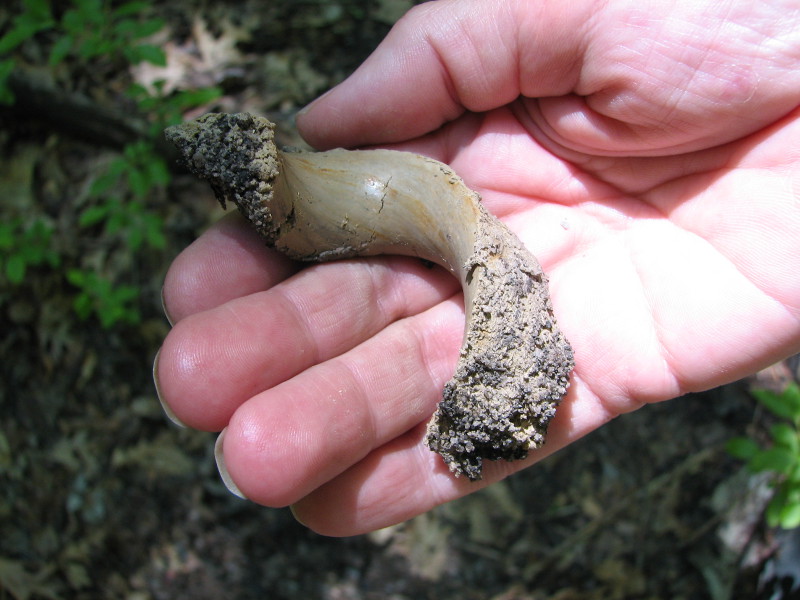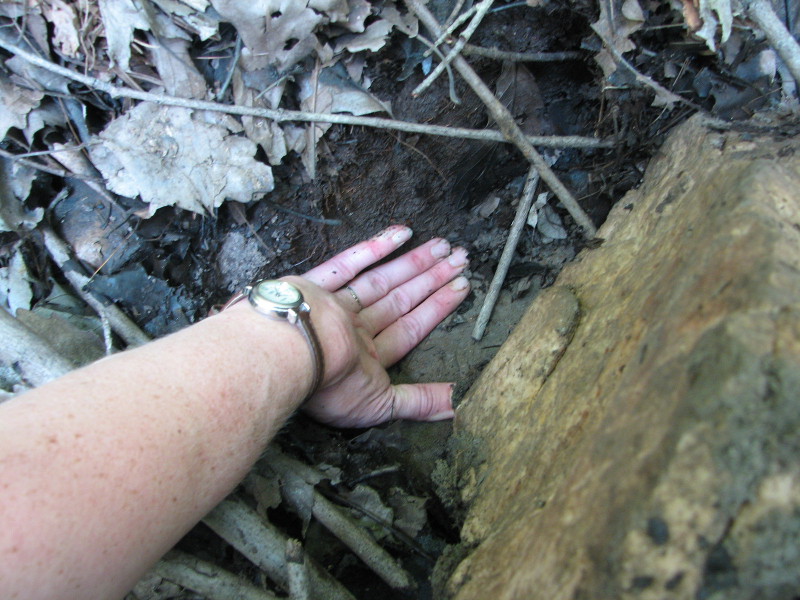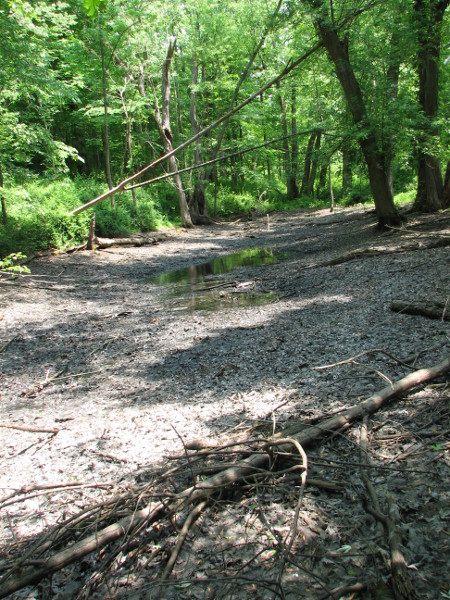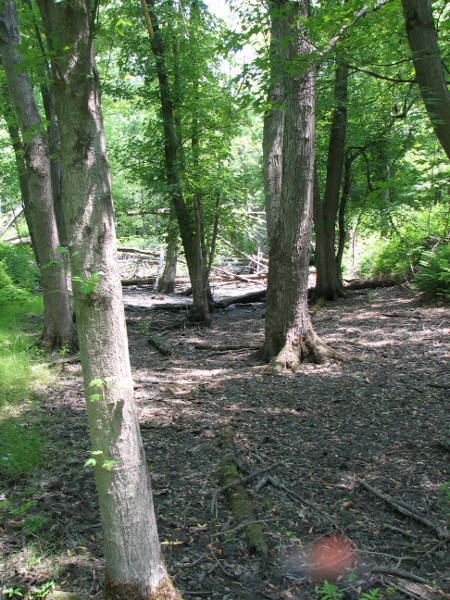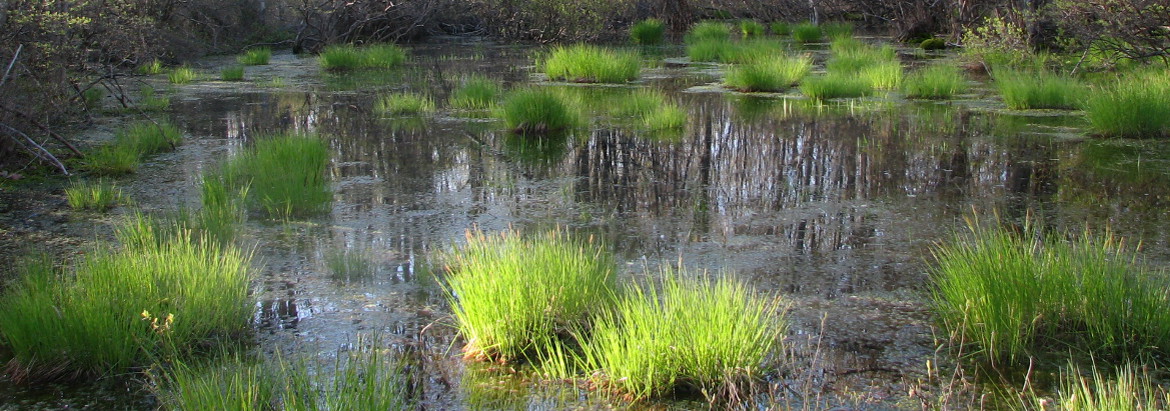 Recognizing a Vernal Pool in the Dry Phase
Recognizing a Vernal Pool in the Dry Phase
All vernal pools dry up periodically. Some pools dry out every year, some others only during dry summers. A pool with no plants in it during the wet phase may become lush with vegetation in the dry phase, or the pool basin may be empty with only graying leaves lining the bottom. A vegetated pool in the wet phase will remain vegetated in the dry phase, but the vegetation may become more lush as the pool dries down. Soil in the pool bottom may become completely dry or it may remain mucky, and an area of standing water may be present especially after a period of rain. A few examples of dry pools of different types are shown here.
With close inspection, a seasonally flooded pool basin will look different than the surrounding upland even during its dry phase. Leaves in the pool basin are compacted and turn gray after a period of inundation. Water stains on the trunks of trees indicate high water levels. The soils also exhibit features of hydric (wet) soils, which mean they have been inundated for a period of time. These features can be used to help locate vernal pools when they are not filled with water.
Recognizing Pools in Dry Phase:
- Trees may grow on hummocks in areas that are seasonally flooded
- Buttressed tree trunks are wider than normal at the base and signify seasonal flooding. Dark water stains, moss and algal growth indicate the approximate high water mark
- Wetland plants in areas with little or no standing water
- Signs of recent aquatic life may be found on the bottom among the leaves, such as the remains of amphibian egg masses, caddisfly cases, and snail shells
- Gray leaves are left behind as a pool dries down. Eventually these will be covered as trees drop their brightly covered leaves in the fall
- Moist, dark, organic soils are present at the surface under the leaves
- Clay soils, when present underneath the surface soils, help pools retain water longer

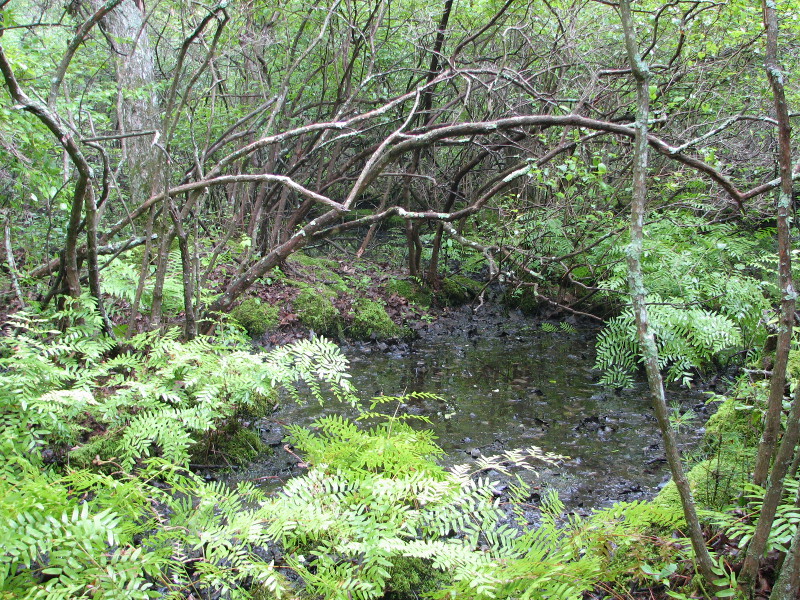
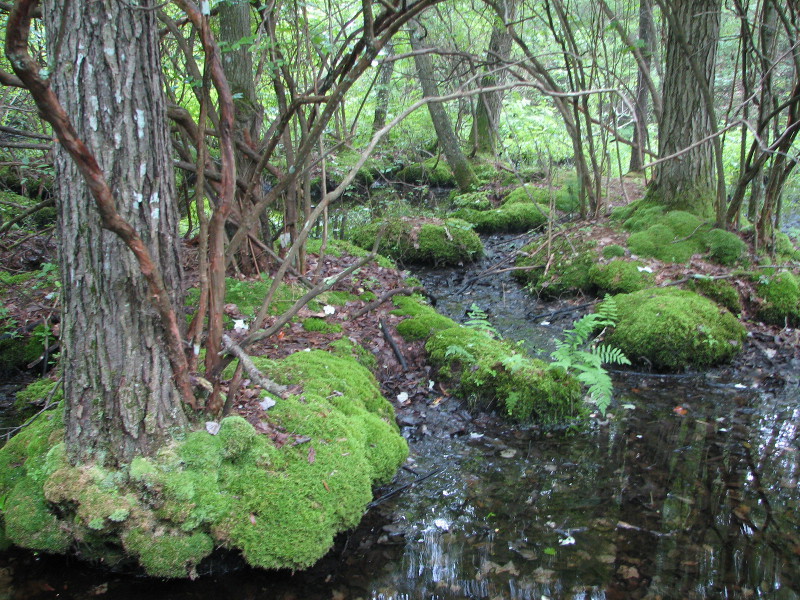
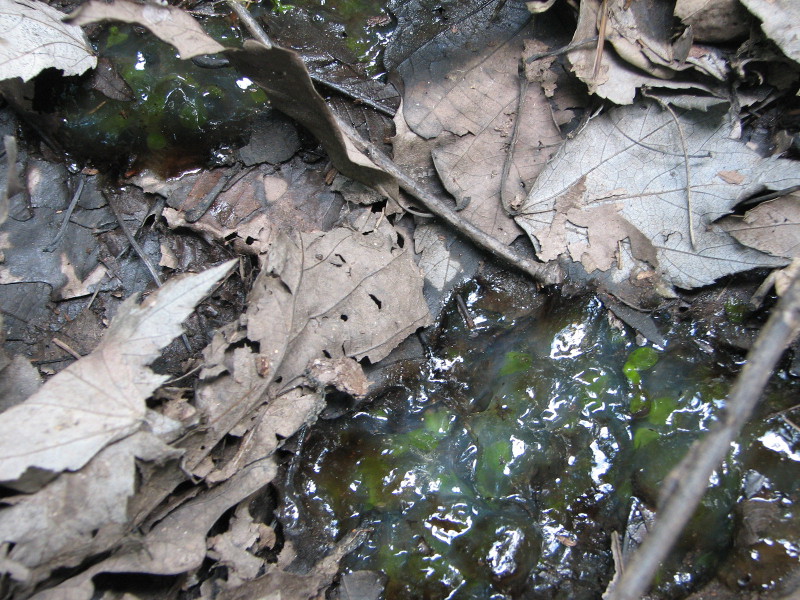
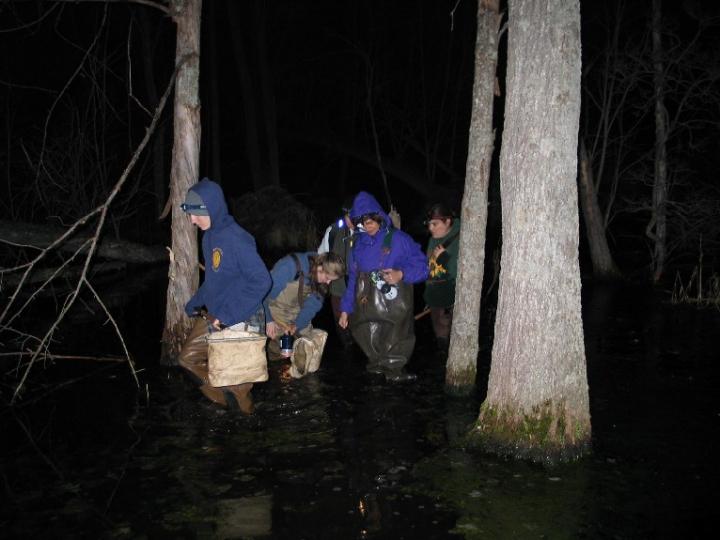
 2ndNrw9 Betsy Leppo.jpg)
